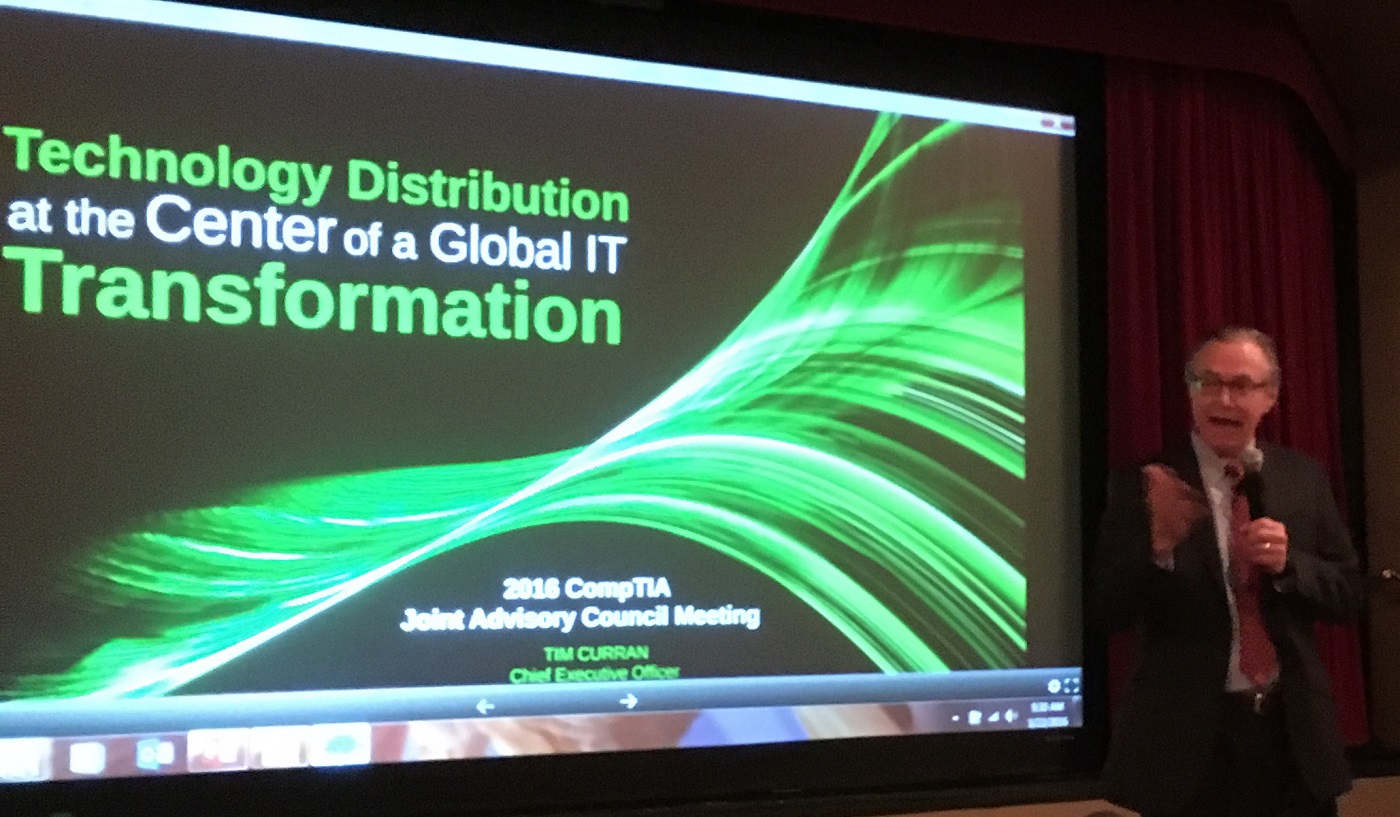Cloud, Internet of Things (IoT), big data…all these innovations appear, at least on the surface, to not require third-party involvement. And why would solution providers need to rely on their distributors for these services when they can get the same thing directly? The simple answer? To leverage multiple value-add options they couldn’t or don’t want to do themselves.
With limited resources and numerous needs, solution providers have to choose their battles wisely. Most try to focus their efforts on a core set of skills and business practices. They train and invest in tools that help them excel at these foundational competencies and learn all they can about the business needs of those customers. So why would they divert those resources to develop an unproven service or take on a new customer when outsource providers can likely do it cheaper or more effectively in much less time? That’s just one of the value propositions that distribution provides. Why reinvent the wheel when others have mastered the learning curve and made the big investments? With so many technological advances and the growing complexity of IT, why wouldn’t you lean on others who can ease delivery process burdens?
IT Distribution in 2016
Those are just a few of the points covered by Tim Curran in his presentation during a joint CompTIA Council breakfast at the Annual Member Meeting (AMM) in Chicago. As CEO of Global Technology Distribution Council (GTDC), he is privy to overall trends in the IT channel, and shared some interesting insight on the industry as a whole. The organization does a lot of work behind the scenes, conducting extensive research and analyzing data to share with members and the community— including data on the fastest growing vendors in distribution.

“It’s a fast changing world with a host of new cloud, managed services and innovative solutions coming online each year. The number of new vendors in distribution each year is amazing. There is a challenge in figuring how to integrate them into end customers’ businesses, but there is tremendous innovation available to take advantage of.”
The first step is to leverage more of the resources providers have available to them. “Why not use the distribution infrastructure? They run incredibly low margin businesses, but run them extremely well. Even in the economic downturn, they remained healthy, which is a testament to their stability and value.” In addition to the traditional hardware and software sales, distribution offers a number of as-a-service options, including:
- Engineering and design
- Mobile device management
- Cloud solutions and programs
- Application engineering
- Solution selling
- Software services consulting
- Network assessments
- Specialized communities
There are few downsides. “These are not competing offerings, but provider-delivered services with distribution in [the] background. You manage the relationship and the distributors do the dirty work, including credit checks and vetting prospective vendors.” As Curran emphasized, they are in business to make the supply chain work more effectively. Today’s distributors help providers deliver everything they need to properly service their customers.
Cloud, IoT and Enterprise
Do we really need distribution when dealing with cloud and other advanced technologies? In a nutshell, yes! The infrastructure and management of these can be quite complex. Unified billing platforms are extremely beneficial to customers as well as and providers. VARs and MSPs can leverage distribution for these services and still make solid margins. “Almost 100 percent of vendors expect year-over-year sales growth in cloud services, and they need help delivering them. They’re looking for partners who can support cloud solutions in particular markets and in many cases, distributors help make those connections.”
The channel recognizes what these relationships are worth. In fact, a recent GTDC survey found that 75 percent of solution providers believe distribution adds value to their cloud businesses. There’s a similar situation occurring with the Internet of Things, with 60 percent of vendors already involved in distribution or in discussions with distributors. The key obstacle to overcome will be getting partners to understand and support all the related solutions. IoT offers the promise of changing everything, presenting a huge opportunity for providers who support hospitals, retailers and a number of other verticals.
Inside the Numbers
Over the past four years, distribution revenue has dropped slightly and, according to Curran, looks a little soft going into 2016. The 2015 numbers were down 2.6 percent by September, and finished off the year at 3.4 percent. “Overall, we are clearly seeing a slowdown in the industry, at least based on distribution movement, and those trends track closely with the GDP numbers.”
Those who think the direct IT market might be a source of the slowdown would be wrong. Cloud, big data and IoT solution growth is not slowing the need for distribution. In fact, more than 360 new vendors entered distribution agreements in the last 24 months. That’s an eye-opening statistic.Then again, perception is often much different than reality. Distribution, according to Curran, remains a strong option for channel partners and vendors. Those who would like more information on the market and the opportunities should check out the council’s website at gtdc.org.

 Add CompTIA to your favorite RSS reader
Add CompTIA to your favorite RSS reader
